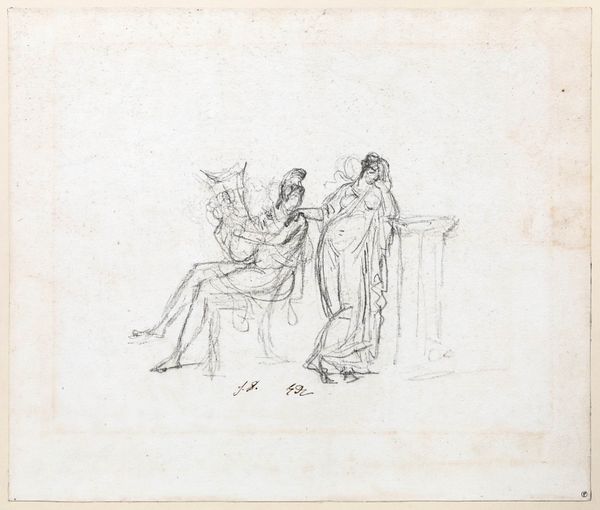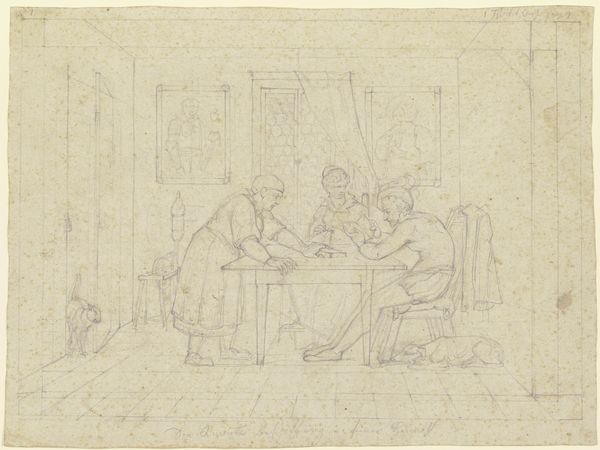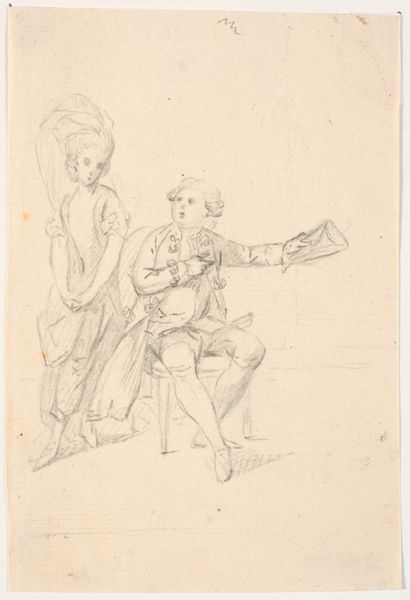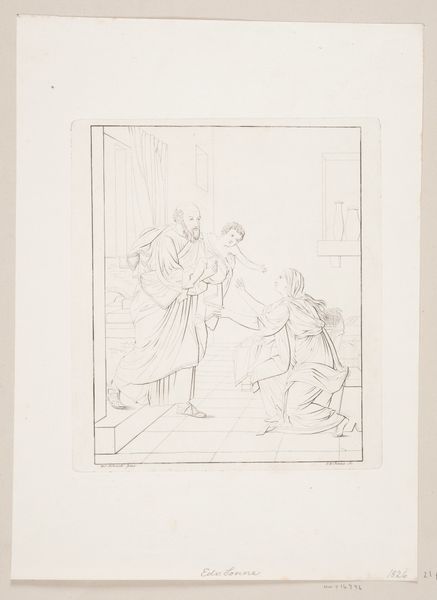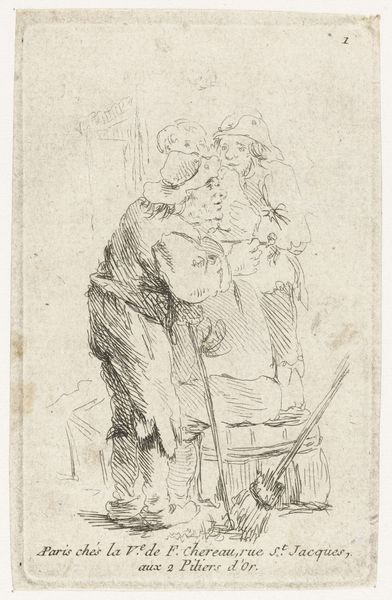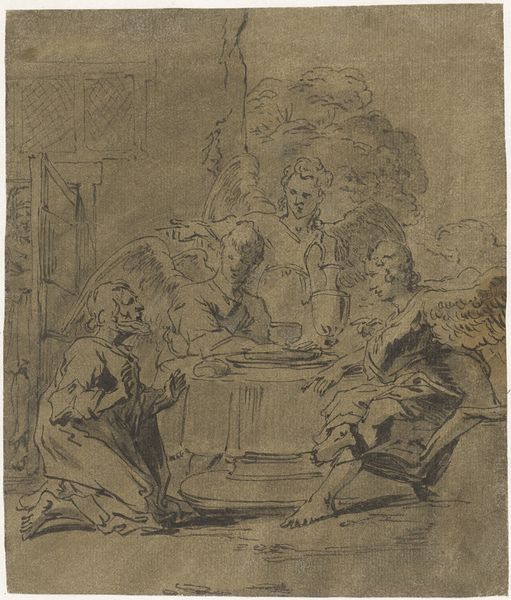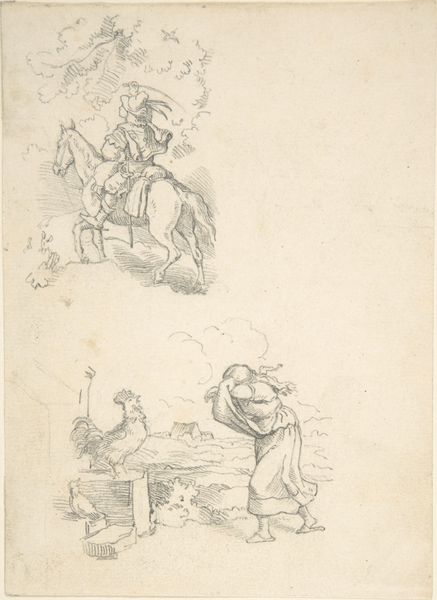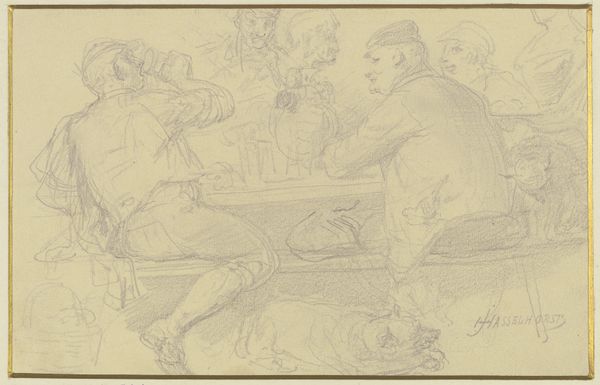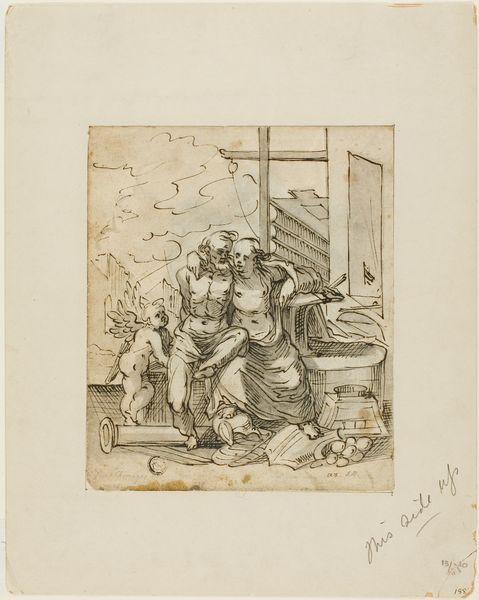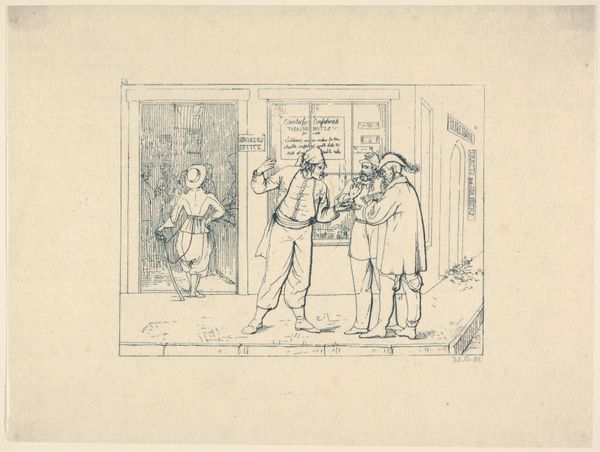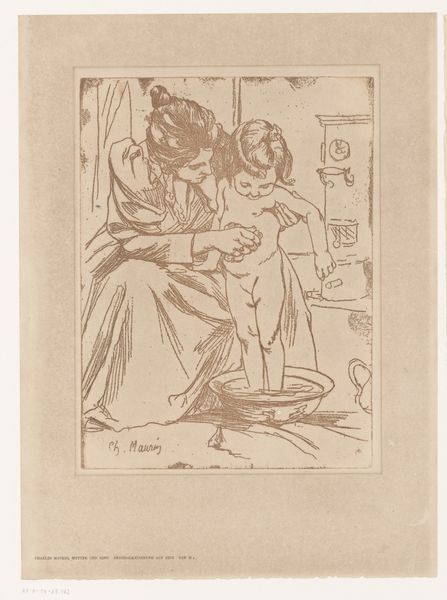
drawing, pencil
#
portrait
#
drawing
#
16_19th-century
#
romanticism
#
pencil
#
genre-painting
Copyright: Public Domain
Curator: Oh, what a delicate thing! There’s an air of quiet drama here, wouldn’t you say? Almost feels like we're eavesdropping on a secret. Editor: This pencil drawing is titled "Zwei Italienerinnen beim Schreiber," or "Two Italian Women with a Scribe" and is attributed to Johann Nepomuk Rauch, who worked in the 19th century, likely during the Romantic period. Curator: Ah, Romanticism. I can see it. That focus on intimacy, but also, for me, there's this sense of social observation—capturing a fleeting moment, the details of their clothing and postures. Are they negotiating something? There’s definitely a story implied beyond what we immediately see. Editor: It is fascinating how the act of documentation becomes the subject. We are given a window into a moment of cultural and perhaps even economic exchange. The presence of the scribe—in his rather formal attire—implies literacy and perhaps a certain class status. We are invited to question how knowledge and power operate within social dynamics. Who has the authority to record and interpret information? Curator: Indeed. The women seem… expectant. Or is it suspicious? The man, he's the focal point with that intense look on his face, and of course, the power over the paper. Is this about him, or them? It feels incomplete, but evocative nonetheless. A fragment of life. The lack of strong shading leaves you, perhaps intentionally, adrift. Editor: Precisely! Consider the broader implications—art itself becoming a means of preserving these everyday encounters and of cementing societal roles and hierarchies. Rauch immortalizes not only individuals but their positions within the broader European, and, likely, colonial context of the time. Who is being served by the depiction? And whose voice is rendered silent? Curator: You know, when you look at it through that lens, I feel uneasy, rather than romantic. Still, in this whisper of lines, Rauch captures something timeless about human transactions, big or small. It's a ghost of a negotiation that haunts the Städel Museum, beckoning a deeper reflection about our own position as spectators of histories in flux. Editor: Ultimately, the image opens us up to contemplate both how representation and access operate within our current global and cultural landscape. A vital point that continues to stimulate public discussion and artistic interrogation, here, at the Städel.
Comments
No comments
Be the first to comment and join the conversation on the ultimate creative platform.
